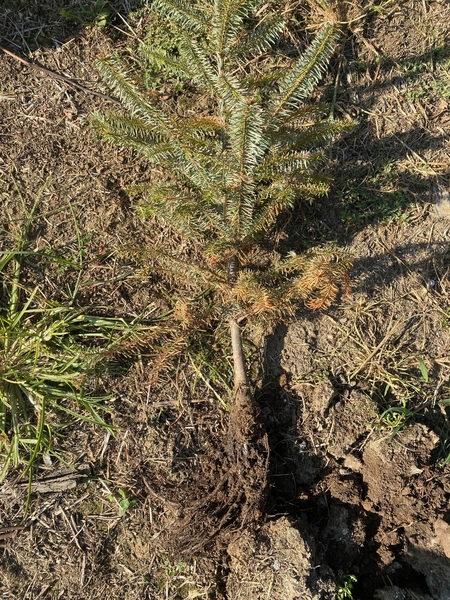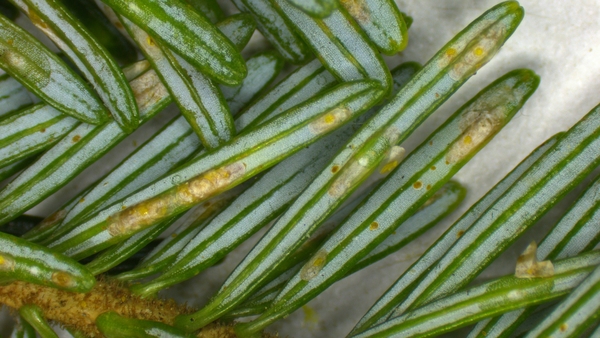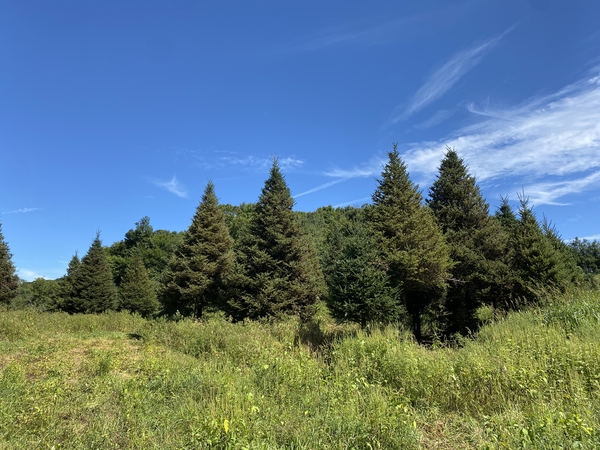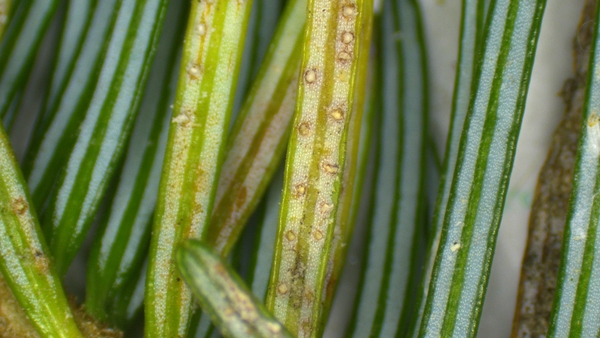Fall 2024 Christmas Tree Update IPM Christmas Tree Notes
go.ncsu.edu/readext?1028435
en Español / em Português
El inglés es el idioma de control de esta página. En la medida en que haya algún conflicto entre la traducción al inglés y la traducción, el inglés prevalece.
Al hacer clic en el enlace de traducción se activa un servicio de traducción gratuito para convertir la página al español. Al igual que con cualquier traducción por Internet, la conversión no es sensible al contexto y puede que no traduzca el texto en su significado original. NC State Extension no garantiza la exactitud del texto traducido. Por favor, tenga en cuenta que algunas aplicaciones y/o servicios pueden no funcionar como se espera cuando se traducen.
Português
Inglês é o idioma de controle desta página. Na medida que haja algum conflito entre o texto original em Inglês e a tradução, o Inglês prevalece.
Ao clicar no link de tradução, um serviço gratuito de tradução será ativado para converter a página para o Português. Como em qualquer tradução pela internet, a conversão não é sensivel ao contexto e pode não ocorrer a tradução para o significado orginal. O serviço de Extensão da Carolina do Norte (NC State Extension) não garante a exatidão do texto traduzido. Por favor, observe que algumas funções ou serviços podem não funcionar como esperado após a tradução.
English
English is the controlling language of this page. To the extent there is any conflict between the English text and the translation, English controls.
Clicking on the translation link activates a free translation service to convert the page to Spanish. As with any Internet translation, the conversion is not context-sensitive and may not translate the text to its original meaning. NC State Extension does not guarantee the accuracy of the translated text. Please note that some applications and/or services may not function as expected when translated.
Collapse ▲Weather Trends: Hot and Dry Summers Here to Stay
According to the NOAA, the southeastern US has experienced a decreasing trend in rainfall during the summer months over the last decades. Most climate models forecast that the decrease in summer rainfall will continue into the future. Temperatures have also steadily increased across the Southeast since the 1970s, especially during the summer. The increase in annual temperature is expected to continue, with an average annual temperature increase of 3-5°F by 2041-2070.
This year, North Carolina had an abnormally wet May followed by the driest June on record dating back 1895. Boone specifically had its 3rd driest June since 1980. Temperatures in June throughout North Carolina also ranked as the warmest since 2018. These warm and dry conditions follow 2023, which was North Carolina’s 7th-warmest year on record since 1895, the first year data was recorded. October of 2023 was particularly dry in many mountain regions. For example, in 2023 Jefferson hosted the driest weather station in the state in October, recording only .35” of rain.
Seedling Mortality and Drought in NC
A number of NC counties were affected by the increased heat and drought conditions. Farms in the southern counties seem to be the most affected, with first-year seedling losses observed in Madison, Mitchell, and Haywood. A few farms suffered 60-95% mortality of first-year seedling. In drought-afflicted farms the Extension team noted Turkish fir seedling mortality was generally lower than Fraser seedlings. Canaan fir seemed to withstand water stress better than Fraser, however the team did see some fields with very high Canaan mortality. Fields with plenty of weeds seemed to fair better in dry conditions, as the weeds could have kept the soil moist. J-rooted seedlings were hit particularly hard.
North Carolina growers normally do not need to irrigate fields. With heat and drought conditions not expected to improve, we at Extension will update production recommendations for afflicted growers.
Dry and Hot Weather Can Increase Sucking-Type Insect Populations
Harsh climatic conditions can affect insect populations, although different types of insects have different reactions to plant host stress. Chewing insects such as caterpillars or sawflies have lower reproductive rates on stressed plants. However, sucking-type arthropods (aphids, scales, adelgids, and mites) often grow faster and have higher rates of reproduction on stressed plants compared to un-stressed plants. Water stress particularly increases sucking-type arthropod reproduction rates. Younger trees are also more vulnerable to sucking-type arthropods than mature trees. Conifers are more susceptible to insect/mite damage than deciduous trees, and slower-growing plants withstand insect/mite damage than faster-growing trees.
Therefore, young (and fast growing) Fraser firs are at particular risk from aphids, scales, adelgids, and mites in years with water and heat stress. Growers should take special care to check for the non-native cryptomeria scale (Aspidiotus cryptomeriae), non-native elongate hemlock scale (Fiorinia externa), and cinara aphid (Cinara spp.) in trees headed to market this fall.
Cryptomeria Recommendations
Cryptomeria scale is established in many east coast states including Virginia, New Jersey, Pennsylvania, Connecticut, and Massachusetts. Currently, cryptomeria scale is not widespread throughout NC. However, it’s important to note that trees and other plant material can be rejected from import into another state if the material is found to carry live plant pests, even if those pests occur in the receiving state. States with established populations of cryptomeria have rejected NC shipments in the past. Therefore, it’s imperative to assure trees with this pest are culled and left in the field to desiccate. Do not drag fresh-cut cryptomeria-infested trees to a burn pile. Wait until the trees have been cut and dead for a week or two before dragging the trees across a field to a burn pile. There are options for treatment earlier in the growing season, and we will be working to test newer insect growth regulator products next year; however insect growth regulators are not good rescue treatments for scale infestations. It’s extremely important to avoid interplanting if the field has a scale problem, as scale infestations in larger infested trees are much harder to control. While butt pruning can raise the temperature of your field, butt pruning is a good cultural method to lower pest pressure if the field has a scale problem. Avoid over fertilization. Fields with lower inputs seem to better resist cryptomeria scale pressure.
Fern Rust
Fern rust (Uredinopsis americana) was observed this August in edge of block of Fraser fir located next to a forest on the Tennessee/North Carolina line. This is disease is only occasionally seen in North Carolina. A few fungicides are available for managing Uredinopsis species of rust on fir, but this disease rarely affects a large swath of a block.
If growers have any questions, please direct them to me or your local extension agent.









